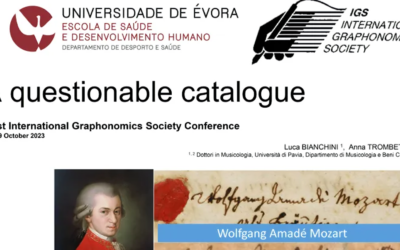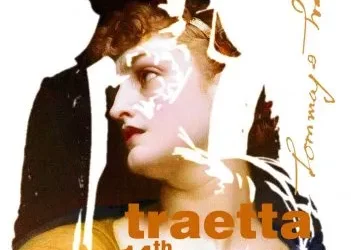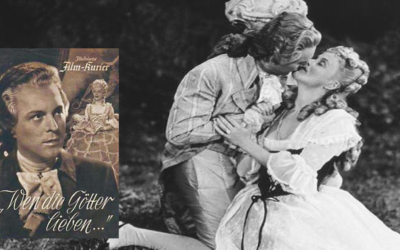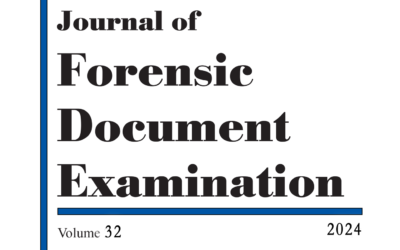A Critical Perspective
The Enigma of Mozart's Symphony in C Major, K.73
The Symphony in C Major K.73 has long puzzled Mozart scholars. Touted as a youthful work of prodigious talent, its origins are murky at best. The title “Symphony,” inscribed on the first page of the autograph, is devoid of the composer’s name, casting immediate doubt on its attribution to Wolfgang Amadeus Mozart. Was this truly his work, or is the Symphony yet another victim of overzealous attribution?
Mozart in Italy: The Untold Story
Was Mozart truly a solitary genius, or was he merely the instrument of his father’s ambition? “Mozart in Italy” challenges the conventional narrative, revealing a complex dynamic between father and son that shaped the course of music history. Prepare to question everything you thought you knew.
“History is not a matter of certainty but of critical inquiry. The truth lies not in the name on the manuscript but in the rigor of the questions we dare to ask.”
Mozart in Italy
A Symphony Without a Name
The manuscript, held at the Biblioteka Jagiellońska in Kraków, is devoid of direct evidence linking it to Mozart. Even more intriguingly, the Minuet from the Symphony appears to have been sketched earlier by Wolfgang on page 7r of the 19 Minuets for Orchestra K.103—another work with authenticity in question. Adding to the intrigue is a bass sketch of the first movement’s opening measures in Leopold Mozart’s hand, found among the canon studies K.73x. These connections muddy the waters further, as both K.103 and K.73x are viewed with skepticism by scholars.
The questions multiply: Could this Symphony have been composed by Leopold? Or perhaps by Padre Giovanni Battista Martini, Mozart’s mentor during his studies in Bologna? Could it even be the work of an entirely different composer, misattributed through a combination of historical mishap and wishful thinking?
The Mystery of Dating and Provenance
A date, “1769,” appears on the manuscript in an unknown hand, likely added by Johann Anton André, an early Mozart publisher. This date has been widely accepted, but without critical verification. As one scholar aptly noted, “born as mere hypotheses, these claims have been passed down hand to hand without any form of verification, eventually gaining undeserved authority as proven facts.”
Ludwig von Köchel originally dated the work to late 1769 in his first edition of the Mozart catalogue. However, Alfred Einstein in the third edition reassigned the Symphony to the summer of 1771 and gave it the number K.75a. Subsequent scholarship wavered between these dates, with Wolfgang Plath eventually endorsing the original 1769-1770 timeframe after examining the autograph. Yet, even Plath admitted his conclusions were subject to the limitations of the manuscript’s accessibility.
The location of the Symphony’s composition is equally ambiguous. Salzburg, Bologna, and even Vienna have been proposed, but no definitive evidence supports any of these claims.
A Web of Contradictions
Further complicating the matter is the connection to Leopold Mozart. His sketch of the bass line for the Symphony’s opening movement raises the possibility that he was not only involved but perhaps the primary composer. This hypothesis is bolstered by the fact that the sketch appears in the same manuscript as Wolfgang’s canonic studies, which were long (and erroneously) associated with his lessons under Padre Martini in Bologna.
The stylistic elements of K.73, while competent, lack the innovation typically associated with Wolfgang’s more established symphonic works. Some have argued that the Symphony reflects more of Leopold’s conservative compositional style than the burgeoning originality of his son.
Conclusion: The Symphony That Challenges Certainty
The Symphony in C Major K.73 stands as a testament to the challenges of Mozart scholarship. Its uncertain attribution, murky origins, and conflicting scholarly interpretations reveal the fragility of the Mozart myth. Whether penned by Wolfgang, Leopold, Martini, or another, this Symphony forces us to confront the complexities of eighteenth-century musical authorship and the perils of unquestioned assumptions.
“In the end, the Symphony in C Major K.73 reminds us that history is not a matter of certainty but of critical inquiry. The truth lies not in the name on the manuscript but in the rigor of the questions we dare to ask.”
You May Also Like
K.143: A Recitative and Aria in the Shadows of Doubt
K.143 is a prime example of how Mozart scholarship has turned uncertainty into myth. With no definitive evidence of authorship, date, or purpose, this uninspired recitative and aria in G major likely originated elsewhere. Is it time to admit this is not Mozart’s work at all?
Mozart’s Thematic Catalogue Exposed as a Forgery
A groundbreaking forensic analysis reveals that Mozart’s thematic catalogue, long thought to be his own work, is a posthumous forgery. This discovery, detailed in Mozart: The Construction of a Genius, turns centuries of Mozart scholarship on its head, demanding a re-examination of his legacy.
Bologna Connections
Quirino Gasparini’s rediscovered Mitridate aria takes centre stage in Bern and Basel, shedding light on Mozart’s reliance on this forgotten composer.
International Traetta Award
We are thrilled to announce that the 14th International Traetta Award has been bestowed upon Anna Trombetta and Luca Bianchini. This prestigious recognition honours their outstanding dedication to musicological research on primary sources of the European musical repertoire, offering significant contributions to reshaping the historiography of 18th-century music.
A Legacy Rewritten by the Shadows of History
Mozart’s image, often regarded as a universal symbol of musical genius, was heavily manipulated by the Nazi regime, a fact largely ignored in post-war efforts to “denazify” German culture. From propaganda-driven films to anti-Semitic narratives, Mozart’s legacy is far more complex and troubling than we are often led to believe.
Unveiling the Truth Behind Mozart’s Thematic Catalogue
Anna Trombetta, Professor Martin W. B. Jarvis from Charles Darwin University, and Luca Bianchini, have published a peer-reviewed article titled Unveiling a New Sophisticated Ink Analysis Technique, and Digital Image Processing: A Forensic Examination of Mozart’s Thematic Catalogue. This research, which underwent an extensive double-blind peer review, has appeared in a journal that serves as a global reference point for forensic document examiners and court specialists.







